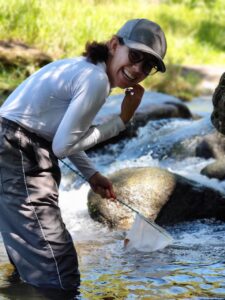Beatriz Maravilha
Summary
Diversity of Atlantic Forest macroinvertebrates under different land uses in the lower course of the Macaé River, Rio de Janeiro, Brazil The Atlantic Forest is the second largest tropical rainforest on the American continent and the conservation of its water sources is essential for maintaining high biodiversity (Bond-Buckup et al., 2010). The conversion of forests into pasture increases soil degradation, siltation and a reduction in the flow of rivers and streams in the Atlantic Forest. These aquatic environments have a very diverse fauna, and these impacts can lead to the disappearance of some organisms, such as aquatic macroinvertebrates, which play a fundamental role in the flow of energy and cycling of materials in these environments (Merten and Minella, 2002). This study aims to qualitatively and quantitatively characterize the benthic macrofauna of springs in the Macaé River basin and evaluate environmental integrity through physical-chemical parameters in streams located in a preservation environment and pasture area, creating an identification catalog, through data obtained during the research. For this, eight streams will be selected from the lower course of the Macaé River, state of Rio de Janeiro, which have forested and pasture areas, where in each stretch the substrate formed by rocks, marginal vegetation and leaf litter will be sampled quarterly. The sampling results will elucidate whether the forested area has a greater reservoir of macroinvertebrates and whether the dominance of these orders remains. Furthermore, analyzes of physicochemical factors will help to understand how the distribution of macroinvertebrates occurs on substrates and their dispersion between forested and pasture environments. Keywords: Atlantic forest; Benthic macrofauna; Diversity; Macaé River; Pasture.
